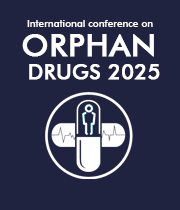Title : Drug recommendation system using a collaborative filtering in machine learning
Abstract:
A drug recommendation system using collaborative filtering in machine learning is a system that suggests drugs to users based on the preferences and patterns of similar users. Collaborative filtering is a popular technique in recommendation systems, and it can be applied to drug recommendations by leveraging the historical data of drug usage and user preferences. The following steps are used to built drug recommendation system using collaborative filtering approach in machine learning.
Data Collection: Gather data on drug usage and user preferences. This data could come from electronic health records, patient surveys, or other sources that capture information on which drugs were prescribed or used by patients and their feedback or ratings on those drugs.
Data Preprocessing: Clean and preprocess the data to handle missing values, remove duplicates, and ensure the data is in a suitable format for collaborative filtering.
User-Item Matrix: Construct a user-item matrix, where rows represent users, columns represent drugs, cells contain user ratings or usage information for each drug. If explicit ratings are not available, implicit feedback (e.g., number of times a drug was prescribed) can be used.
Similarity Calculation: Calculate the similarity between users based on their drug usage patterns.
Various similarity metrics can be used, such as cosine similarity or Pearson correlation coefficient.
Neighborhood Selection: Identify a subset of similar users (i.e., neighbors) for each target user based on the calculated similarity scores.
Prediction: For each drug not yet used by the target user, predict their preference or likelihood of using the drug based on the ratings or usage patterns of their neighbors.
Top-N Recommendations: Generate a ranked list of top-N drug recommendations for each user, considering the predicted preferences.
Evaluation: Evaluate the performance of the recommendation system using metrics such as precision, recall, or Mean Average Precision (MAP).
Deployment: Deploy the drug recommendation system in a healthcare setting, integrating it with electronic health records or other relevant systems to provide personalized drug suggestions to healthcare professionals or patients.
It's important that healthcare recommendation systems, especially for drugs, need to adhere to strict privacy and security regulations to protect patient data. Additionally, medical professionals should always review and validate the recommendations before making any decisions regarding patient treatments. Collaborative filtering is just one approach to building drug recommendation systems. The overview of training dataset for drug recommendation is as follows.
Audience Take Away Notes:
• Role of machine learning and recommendation system for health care
• Drug recommendation system using machine learning techniques
• Types of recommendation system
• Collaborative filtering approach for drug recommendation system
• Research directions


